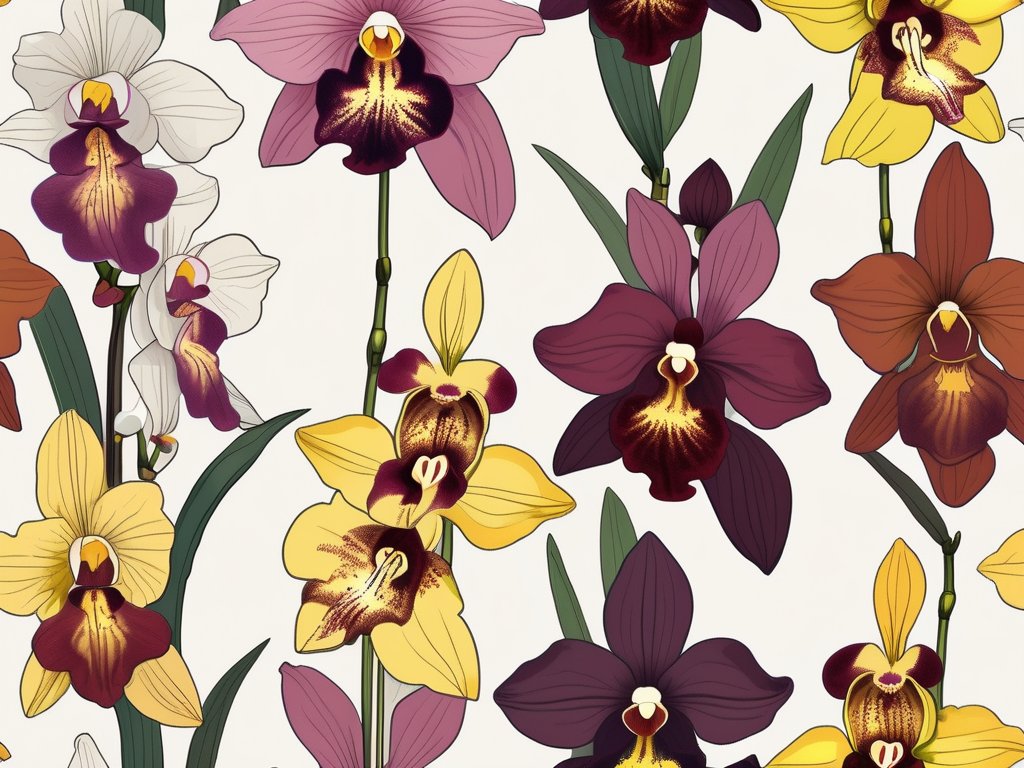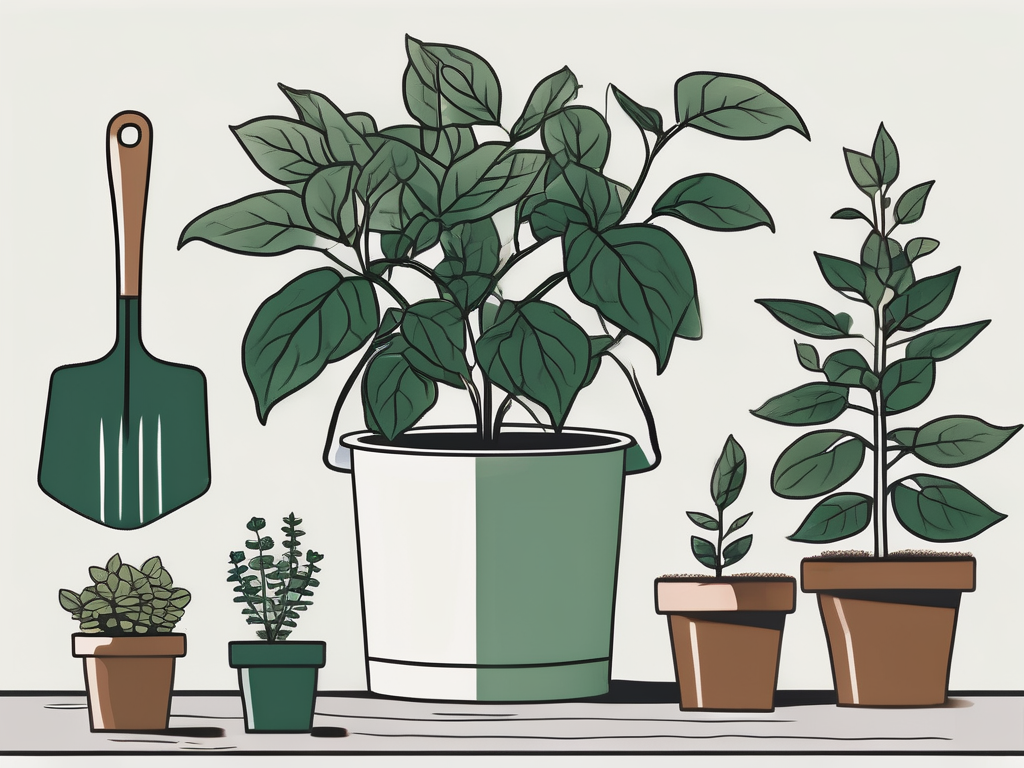
Oncidium orchids, often referred to as "dancing ladies" because of their fluttering, skirt-like petals, are a delightful addition to any plant collection. These orchids, with their impressive variety of shapes, sizes, and colors, can brighten up any space and bring a touch of exotic elegance to your home.
In this article, we'll explore the different types of Oncidium orchids, along with tips on caring for them and integrating them into your interior spaces. Whether you're a seasoned plant lover or just starting your orchid journey, there's something here for everyone to enjoy and learn from.
Getting to Know Oncidium Orchids
Oncidium orchids belong to a large and diverse genus, with over 300 species to their name. Native to the tropical and subtropical regions of Central and South America, these orchids have adapted to a wide range of environments, making them quite hardy and versatile as houseplants.
One of the standout features of Oncidium orchids is their pseudobulbs, which are swollen stems that store water and nutrients. This unique feature helps them thrive in a variety of conditions, as they can draw on these reserves during dry spells. Oncidiums also have long, slender leaves and produce sprays of small, intricate flowers that come in a range of colors, from sunny yellows to deep reds and purples.
Interestingly enough, Oncidiums are often compared to butterflies because of the way their flowers move in the breeze, giving them a lively, animated appearance. This characteristic, along with their vibrant colors, makes them a popular choice for plant lovers looking to add some whimsy to their homes.
Popular Types of Oncidium Orchids
With so many species and hybrids available, choosing the right Oncidium orchid for your home can be a fun and rewarding adventure. Let's take a closer look at some popular varieties that you might consider adding to your collection:
- Oncidium Sharry Baby: Often called the "Chocolate Orchid," this variety is famous for its sweet, chocolate-like fragrance. The flowers are small, with a rich burgundy hue accented by white or pink highlights.
- Oncidium Twinkle: Known for its profusion of tiny, star-shaped flowers, this variety is compact and perfect for smaller spaces. The blooms come in colors like white, yellow, and pink, and they have a delightful, sweet scent.
- Oncidium Gower Ramsey: This hybrid is popular for its bright yellow flowers with a contrasting red-brown lip. It's a vigorous grower and produces large flower spikes that can brighten any room.
- Oncidium Sweet Sugar: With its sunny yellow flowers and robust growth habit, this variety is perfect for beginners. It's easy to care for and can produce multiple flower spikes at once.
Each type of Oncidium orchid brings something unique to the table, and with such a variety of choices, you're sure to find one that suits your taste and home environment.
Choosing the Right Oncidium for Your Space
When selecting an Oncidium orchid for your home, there are a few considerations to keep in mind to ensure you choose the right plant for your space and lifestyle.
Light Requirements
Oncidiums generally prefer bright, indirect light. While they can tolerate some direct sunlight, especially morning sun, too much can cause their leaves to scorch. If you don't have a spot with natural light, they can also do well under artificial grow lights.
Space and Size
Consider the size of the Oncidium when fully grown. Some varieties, like the Twinkle, are compact and perfect for small spaces, while others, like the Gower Ramsey, can grow quite large and may need more room to thrive.
Fragrance and Color
If you're looking to add fragrance to your home, varieties like Sharry Baby and Twinkle are excellent choices. On the other hand, if you're more interested in color, consider the vibrant hues of Sweet Sugar or the striking contrast of Gower Ramsey.
Ultimately, the best Oncidium orchid for your space will depend on your personal preferences and the conditions you can provide. Take some time to think about where you'd like to place your orchid and what features are most important to you.
Caring for Oncidium Orchids
Once you've chosen your Oncidium orchid, it's important to provide the right care to keep it healthy and flourishing. Here are some essential care tips to help you get started:
Watering
Oncidiums prefer to be kept moderately moist. Water them thoroughly when the potting medium feels dry to the touch, but be sure to let excess water drain away to prevent root rot. In general, watering once a week is a good starting point, but you may need to adjust based on your home's humidity and temperature.
Humidity
These orchids thrive in environments with moderate to high humidity. If your home is on the dry side, consider using a humidity tray or a small humidifier to keep the air around your orchid moist. Alternatively, you can mist the leaves regularly, but be cautious not to let water sit in the crown of the plant, as this can lead to rot.
Fertilizing
During the growing season, which typically runs from spring to fall, feed your Oncidium orchid with a balanced orchid fertilizer every two weeks. Reduce fertilizing to once a month in the winter when the plant's growth slows down. Always follow the instructions on the fertilizer package to avoid overfeeding.
With the right care, your Oncidium orchid will reward you with beautiful blooms and vibrant foliage, adding life and color to your home.
Potting and Repotting Oncidium Orchids
Proper potting and repotting are crucial for maintaining the health and vigor of your Oncidium orchid. Here's what you need to know:
Potting Medium
Oncidiums prefer a well-draining potting medium that allows air to circulate around the roots. A mix of bark, perlite, and sphagnum moss is ideal. This combination provides the necessary drainage while retaining enough moisture to keep the roots happy.
Repotting Frequency
These orchids generally need repotting every two to three years or when the potting medium breaks down and becomes compacted. You might also need to repot if you notice the roots protruding from the pot or if the plant becomes top-heavy.
How to Repot
- Gently remove the orchid from its current pot and shake off any old potting medium.
- Trim away any dead or damaged roots with sterilized scissors.
- Place the orchid in a new pot that's only slightly larger than the previous one.
- Fill in around the roots with fresh potting medium, ensuring the plant is stable and secure.
- Water the plant lightly after repotting and resume regular care once it adjusts to its new home.
Repotting can seem daunting at first, but with a little practice, you'll become more comfortable with the process and confident in your ability to care for your orchid.
Common Pests and Problems
Like all houseplants, Oncidium orchids can sometimes fall prey to pests and other issues. Recognizing the signs early can help you take swift action and keep your plant healthy.
Common Pests
- Spider Mites: These tiny pests can cause leaves to look stippled or discolored. Increase humidity and gently wipe down leaves with a damp cloth to help control them.
- Mealybugs: These pests appear as white, cottony masses on leaves and stems. Remove them with a cotton swab dipped in alcohol or use insecticidal soap.
- Aphids: These small insects can distort new growth. Spray them off with water or use an insecticidal soap if necessary.
Common Problems
- Root Rot: Caused by overwatering, root rot can be deadly. Ensure proper drainage and only water when the potting medium is dry.
- Leaf Yellowing: This can be a sign of too much sunlight or inadequate watering. Adjust the light exposure and watering schedule as needed.
Regularly inspect your orchids for any signs of pests or problems. Quick action can often prevent minor issues from becoming major headaches.
Integrating Oncidium Orchids into Your Home Decor
Oncidium orchids are not only beautiful but also versatile when it comes to home decor. Here are some creative ways to incorporate these stunning orchids into your living space:
Orchid Arrangements
Create an eye-catching centerpiece by combining different Oncidium varieties in a large decorative pot or planter. Their vibrant colors and contrasting forms can create a dynamic display that draws attention and adds a touch of elegance to your dining or coffee table.
Hanging Displays
Consider mounting your Oncidium orchids on pieces of driftwood or tree fern plaques and hanging them on walls or from the ceiling. This not only showcases their natural beauty but also saves space, making it a great option for smaller homes or apartments.
Orchid Terrariums
For a more contained display, try creating a terrarium with your Oncidium orchids. Use a glass container and layer it with decorative stones, moss, and your orchids to create a mini indoor garden. This setup can be a conversation starter and adds a touch of nature to any room.
Whether you're going for a bold statement or a subtle accent, Oncidium orchids can fit seamlessly into various decor styles, from modern to traditional.
Seasonal Care Tips
Oncidium orchids have different needs depending on the season, so it's important to adjust your care routine accordingly. Here's what to keep in mind:
Spring and Summer
- Increase watering frequency as the plant enters its active growing phase.
- Provide bright, indirect light to encourage growth and flowering.
- Fertilize every two weeks with a balanced orchid fertilizer.
Fall and Winter
- Reduce watering as the plant's growth slows down.
- Maintain adequate humidity to prevent leaf drop.
- Fertilize once a month or stop altogether if the plant is dormant.
Adapting your care routine to the seasons will help your Oncidium orchid thrive year-round and ensure it continues to grace your home with its beautiful blooms.
Propagation Tips and Techniques
If you're interested in expanding your orchid collection or sharing your Oncidium with friends, propagation can be a rewarding experience. Here's how you can propagate your Oncidium orchids:
Division
Division is the most common method for propagating Oncidium orchids. It's best done during repotting when the plant has outgrown its pot.
- Carefully remove the orchid from its pot and gently separate the pseudobulbs, ensuring each division has at least three healthy bulbs.
- Trim any dead or damaged roots and plant each division in its pot with fresh potting medium.
- Water lightly and place the divisions in a location with bright, indirect light.
Backbulbs
Backbulbs, the older pseudobulbs of an Oncidium orchid, can sometimes be used to propagate new plants.
- Remove a healthy backbulb from the plant and let it dry for a day or two.
- Plant the backbulb in a small pot with a well-draining medium, keeping it barely moist.
- Place the pot in a warm, humid location until new growth appears, which can take several months.
While propagation requires patience and care, it's a wonderful way to grow your collection and share the joy of Oncidium orchids with others.
Final Thoughts
From their striking blooms to their lively personalities, Oncidium orchids truly offer something unique to the world of houseplants. Whether you're drawn to their vibrant colors, delightful fragrances, or simply their charming appearance, these orchids can bring a special touch to your home.
At Cafe Planta, we love helping plant people find joy in their plant collections. We offer a variety of houseplants and accessories to enhance your plant parenting journey. If you have any questions or need advice, feel free to email us or send a DM on Instagram. Let's grow together and celebrate the beauty of plants!












